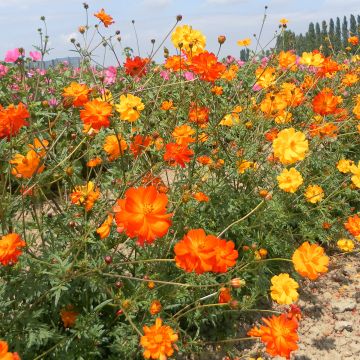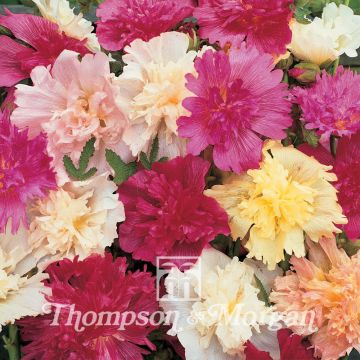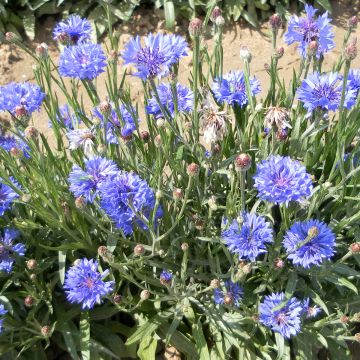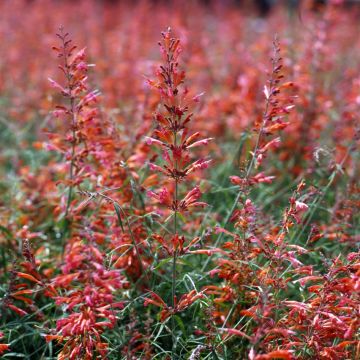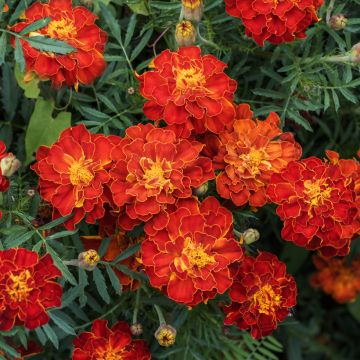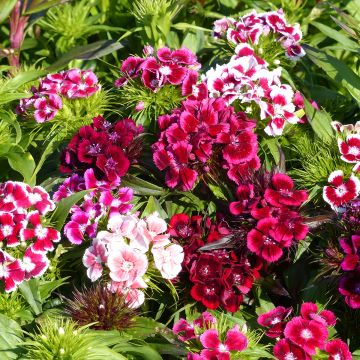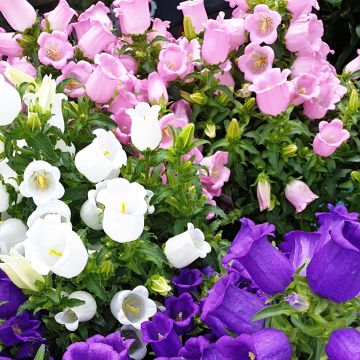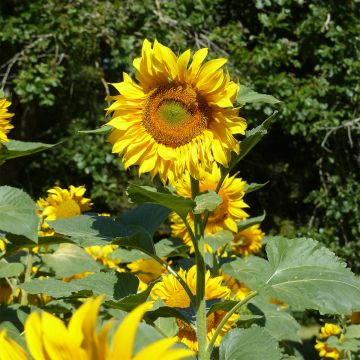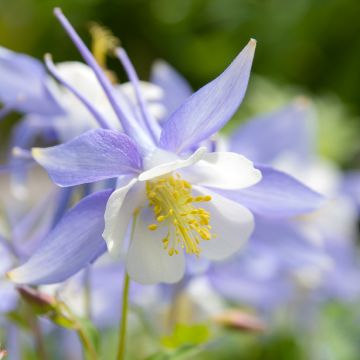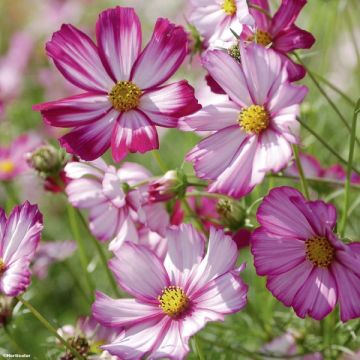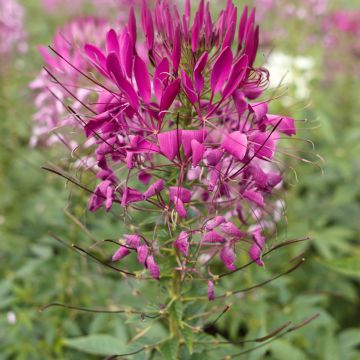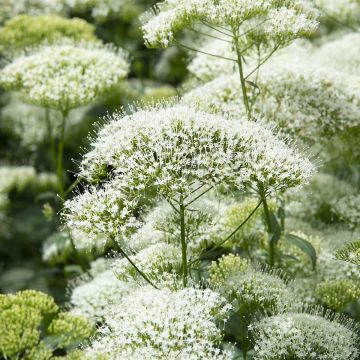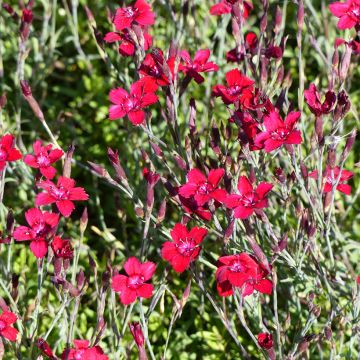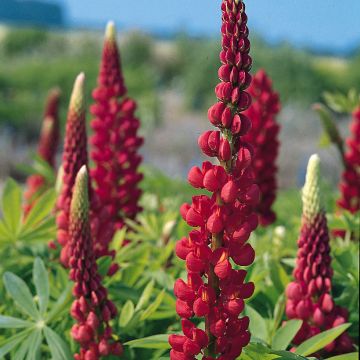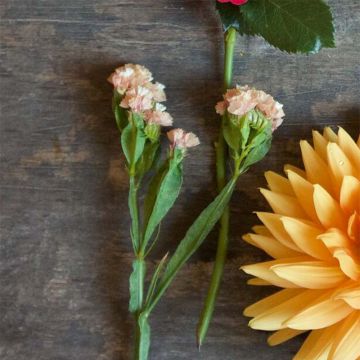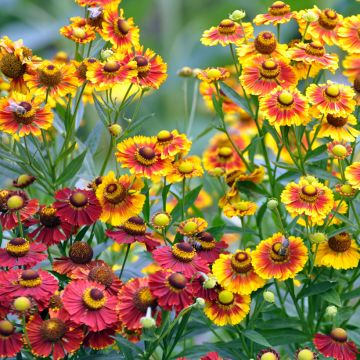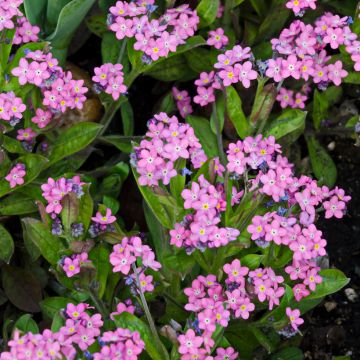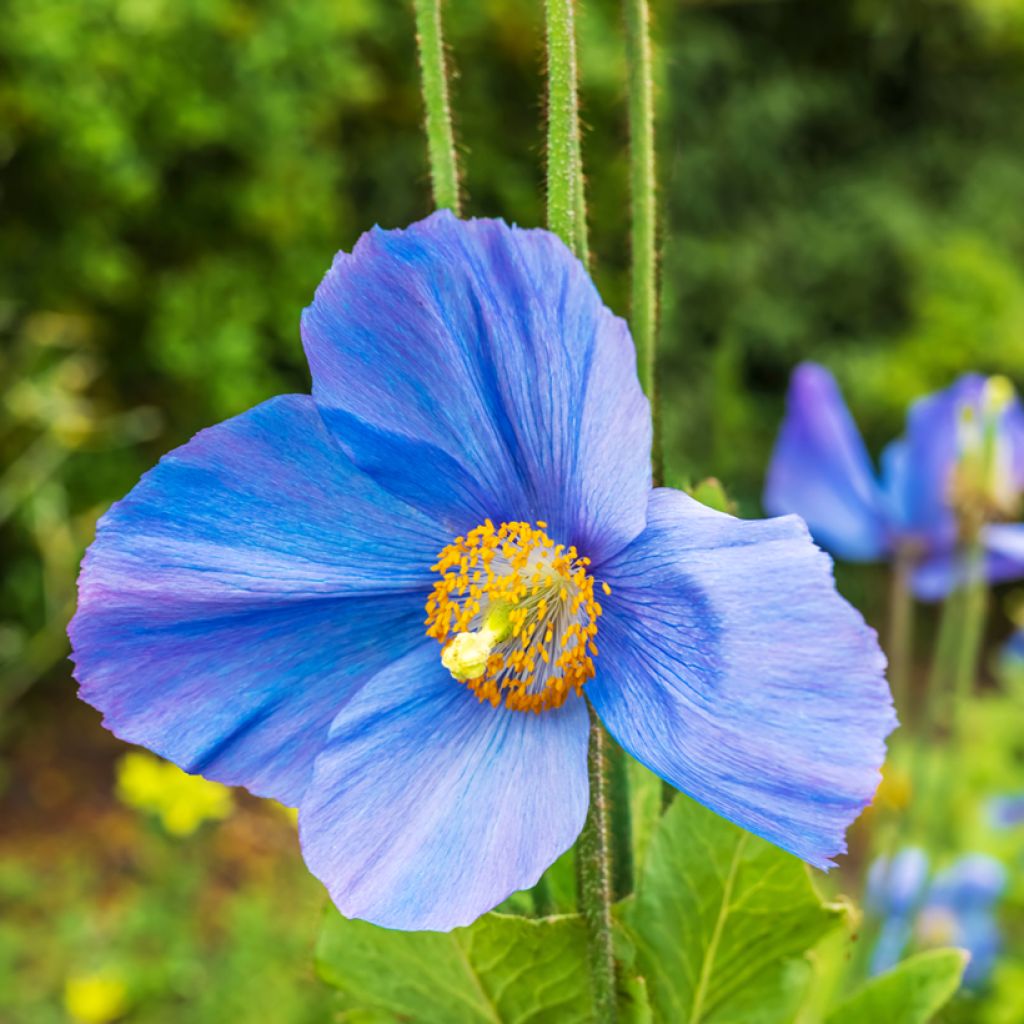

Meconopsis grandis Seeds - Blue Poppy
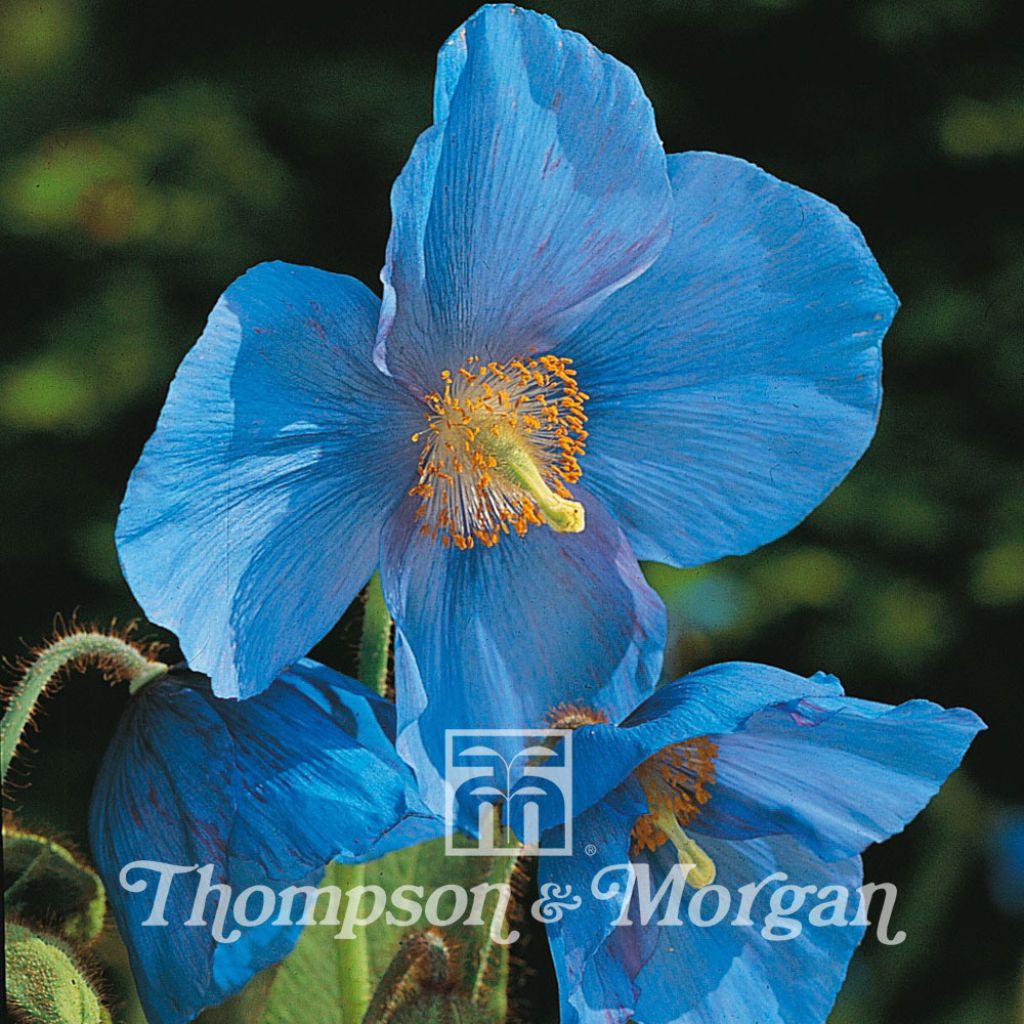

Meconopsis grandis Seeds - Blue Poppy
Meconopsis grandis Seeds - Blue Poppy
Meconopsis grandis
Blue Poppy, Himalayan blue Poppy
This plant carries a 6 months recovery warranty
More information
We guarantee the quality of our plants for a full growing cycle, and will replace at our expense any plant that fails to recover under normal climatic and planting conditions.
Does this plant fit my garden?
Set up your Plantfit profile →
Description
Meconopsis grandis, also known as the Himalayan Blue Poppy, is a spectacular perennial plant belonging to the mythical tribe of blue poppies from the Himalayas. In spring and summer, it produces large poppy-like flowers of a very bright gentian blue, often shaded with purple at the base of the petals centred around a heart of golden stamens. The flowers are borne by elegant and sturdy stems above fairly light, velvety green foliage. This is the least demanding and most perennial of all. As such, it deserves an attempt at sowing it in humus-rich and moist soil, in the shelter of undergrowth, in filtered light.
Originally from China, in the northwest of Yunnan Province, and southeast Tibet, the blue poppy grows at an altitude of 3000 to 4000m (9842 to 13123ft). It grows in shaded and humid places, in neutral, humus-rich, and deep soil. It is a hardy perennial plant, but quite often semelparous (it tends to wither after flowering) with rapid growth, showing a rosette habit from which emerge floral stems at least 80cm (32in) tall. The basal rosette, with a diameter of 40 to 50cm (16 to 20in), is composed of oblong and ovate leaves, of a fairly light green colour, covered with rust-coloured hairs. The leaves are marked with a central vein, and are alternate. The floral stems present several flowers grouped in racemes, with a diameter of 10 to 12cm (4 to 5in). The crumpled petals have a slightly translucent and silky texture. They are gentian blue, often washed with purple towards the base of the petals. At maturity, their golden centre is composed of an ovary with a short stem surrounded by a collar of white stamens when they are juveniles. Flowering is followed by the formation of brown capsules filled with small black seeds. This plant generally does not flower in the first year if sown too late.
Less difficult to maintain in our gardens than Meconopsis betonicifolia, the blue poppy is more perennial, but as hardy and prolific as the latter. To give yourself the best chance of growing it, find the coldest spot in your garden, at the foot of a wall to the east or north, in well-drained and loose soil, or at the edge of woodland exposed to the morning sun. Plant it in large masses, give it space and let nature take its course. Meconopsis grandis seems to be easier to grow in cool and humid climates in summer, such as temperate coastal zones with the oceanic influence. It should be kept in mind that this plant experiences summer monsoons in Tibet and is covered in snow during winter.
Report an error about the product description
Flowering
Foliage
Plant habit
Botanical data
Meconopsis
grandis
Papaveraceae
Blue Poppy, Himalayan blue Poppy
Himalayas
Other Thompson and Morgan seeds
View all →Planting and care
Sow Meconopsis seeds from February to June or from September to October. Place the seeds on the surface of good, well-draining and fine compost, and cover with a very thin sprinkle of compost or vermiculite. Enclose the sowing in a transparent plastic bag and place it outside in a mini-greenhouse or a sheltered area. Keep the substrate moist and protect it from rain, but not from frost. Germination can take from 1 to 3 months.
Once the seedlings have emerged, place them in a room at 10 to 15°C (50 to 59°F), no more. Water carefully to avoid damping off, caused by the development of a pathogenic fungus in overly wet and warm conditions.
Transplant the seedlings into 7.5cm (3in) diameter pots once they have developed 2 true leaves. Place the pots in a cooler location, in dappled sunlight. When the plants reach a height of 45cm (18in), transplant them into the garden, in deep, loamy, moist to wet soil, in a partially shaded position sheltered from strong winds.
Cultivation:
To successfully cultivate it, the environment in which it will be planted must be cool with plenty of humidity in the air. The soil must also be consistently moist, but always well-drained. It must be remembered that this plant originates in the mountains, where the soil is always drained by the underlying rock. A mixture of clay soil, leaf compost, and gravel in equal parts suits it very well. It does not tolerate limestone or heat, which is why it is so difficult to cultivate it outside of temperate coastal areas influenced by the ocean.
Sowing period
Intended location
-
, onOrder confirmed
Reply from on Promesse de fleurs
Similar products
Haven't found what you were looking for?
Hardiness is the lowest winter temperature a plant can endure without suffering serious damage or even dying. However, hardiness is affected by location (a sheltered area, such as a patio), protection (winter cover) and soil type (hardiness is improved by well-drained soil).

Photo Sharing Terms & Conditions
In order to encourage gardeners to interact and share their experiences, Promesse de fleurs offers various media enabling content to be uploaded onto its Site - in particular via the ‘Photo sharing’ module.
The User agrees to refrain from:
- Posting any content that is illegal, prejudicial, insulting, racist, inciteful to hatred, revisionist, contrary to public decency, that infringes on privacy or on the privacy rights of third parties, in particular the publicity rights of persons and goods, intellectual property rights, or the right to privacy.
- Submitting content on behalf of a third party;
- Impersonate the identity of a third party and/or publish any personal information about a third party;
In general, the User undertakes to refrain from any unethical behaviour.
All Content (in particular text, comments, files, images, photos, videos, creative works, etc.), which may be subject to property or intellectual property rights, image or other private rights, shall remain the property of the User, subject to the limited rights granted by the terms of the licence granted by Promesse de fleurs as stated below. Users are at liberty to publish or not to publish such Content on the Site, notably via the ‘Photo Sharing’ facility, and accept that this Content shall be made public and freely accessible, notably on the Internet.
Users further acknowledge, undertake to have ,and guarantee that they hold all necessary rights and permissions to publish such material on the Site, in particular with regard to the legislation in force pertaining to any privacy, property, intellectual property, image, or contractual rights, or rights of any other nature. By publishing such Content on the Site, Users acknowledge accepting full liability as publishers of the Content within the meaning of the law, and grant Promesse de fleurs, free of charge, an inclusive, worldwide licence for the said Content for the entire duration of its publication, including all reproduction, representation, up/downloading, displaying, performing, transmission, and storage rights.
Users also grant permission for their name to be linked to the Content and accept that this link may not always be made available.
By engaging in posting material, Users consent to their Content becoming automatically accessible on the Internet, in particular on other sites and/or blogs and/or web pages of the Promesse de fleurs site, including in particular social pages and the Promesse de fleurs catalogue.
Users may secure the removal of entrusted content free of charge by issuing a simple request via our contact form.
The flowering period indicated on our website applies to countries and regions located in USDA zone 8 (France, the United Kingdom, Ireland, the Netherlands, etc.)
It will vary according to where you live:
- In zones 9 to 10 (Italy, Spain, Greece, etc.), flowering will occur about 2 to 4 weeks earlier.
- In zones 6 to 7 (Germany, Poland, Slovenia, and lower mountainous regions), flowering will be delayed by 2 to 3 weeks.
- In zone 5 (Central Europe, Scandinavia), blooming will be delayed by 3 to 5 weeks.
In temperate climates, pruning of spring-flowering shrubs (forsythia, spireas, etc.) should be done just after flowering.
Pruning of summer-flowering shrubs (Indian Lilac, Perovskia, etc.) can be done in winter or spring.
In cold regions as well as with frost-sensitive plants, avoid pruning too early when severe frosts may still occur.
The planting period indicated on our website applies to countries and regions located in USDA zone 8 (France, United Kingdom, Ireland, Netherlands).
It will vary according to where you live:
- In Mediterranean zones (Marseille, Madrid, Milan, etc.), autumn and winter are the best planting periods.
- In continental zones (Strasbourg, Munich, Vienna, etc.), delay planting by 2 to 3 weeks in spring and bring it forward by 2 to 4 weeks in autumn.
- In mountainous regions (the Alps, Pyrenees, Carpathians, etc.), it is best to plant in late spring (May-June) or late summer (August-September).
The harvesting period indicated on our website applies to countries and regions in USDA zone 8 (France, England, Ireland, the Netherlands).
In colder areas (Scandinavia, Poland, Austria...) fruit and vegetable harvests are likely to be delayed by 3-4 weeks.
In warmer areas (Italy, Spain, Greece, etc.), harvesting will probably take place earlier, depending on weather conditions.
The sowing periods indicated on our website apply to countries and regions within USDA Zone 8 (France, UK, Ireland, Netherlands).
In colder areas (Scandinavia, Poland, Austria...), delay any outdoor sowing by 3-4 weeks, or sow under glass.
In warmer climes (Italy, Spain, Greece, etc.), bring outdoor sowing forward by a few weeks.



































